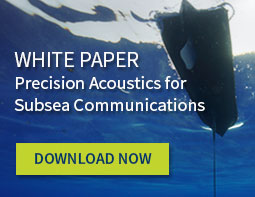Mission Planning: Minimize Risk, Maximize Success
Liquid Robotics — June 8, 2017
You wouldn’t launch a rocket without first putting together a detailed flight plan. It’s the same with the Wave Glider. Mission planning, including operational risk assessments, is a big part of how we help our customers ensure mission success. I sat down with Marc Sallaberry, who leads our Mission Support Operations team, to talk more about it.
Let’s start with risk assessments. What are they, and how do they fit into the process with customers?
The operational risk assessment is how we evaluate mission feasibility. Given the location of the world where a customer is looking to operate, and the work that they are trying to do, can the Wave Glider be successful?
We do risk assessments throughout the process with customers: pre-proposal, at the proposal/quote phase, and during mission planning as we prepare to put the vehicle in the water.
For customers evaluating the Wave Glider, in the pre-proposal phase, we’ll identify the major challenges for the potential mission, and identify ways to mitigate those challenges. We’ll come up with a cost model that makes sense, and determine how we can achieve the mission objectives.
Once we’re at the quote phase, we dive deeper into the specifics of the mission. We get into the nitty-gritty of how the vehicle is going to perform in the specific area of operation, we consider what field resources will be required, and how every component will come together to make the mission a success.
And then after the customer has purchased the Wave Glider, the final operational risk assessment goes into the mission plan.
Why is the risk assessment so important? How do we use it?
We have internal tools that we’ve built with our engineers, using performance data from over a million nautical miles of Wave Glider operations. We combine that with data from public sources like NOAA’s WAVEWATCH and HYCOM for additional environmental data to put into our global models. We also model the power system using global solar insolation data and the resulting power generation of the Wave Glider in those conditions. And with all of that data, what we are able to do is characterize the performance of the vehicle in certain conditions—based on wave height X and wind speed Y and surface current Z, how is the vehicle going to do performance-wise? How much power will we have at our disposal to design a successful payload duty-cycle? Then we simulate the mission.
We can very accurately simulate the exact Wave Glider mission a customer would run, and we can determine what is the percent likelihood of success and identify risks.
Given the initial results of the simulation, we can tailor the mission plan. We may adjust the location slightly, or we may adjust the power draw on the payload. We’ll continue to tailor it until we have a plan that looks feasible and has a high likelihood of success, and then we’ll present that plan to the customer.
Is a risk assessment required before every mission?
Yes and no. We require it if we are going to be piloting the mission or contributing field resources. We think it’s essential to identify and mitigate risks before every mission. If a customer will be operating the Wave Gliders themselves, the risk assessment is not required, but often they will still request one because they want to set up their mission for success. We get a lot of strong positive feedback from customers about the value of the risk assessment.
How does this fit into the overall mission plan?
The mission plan is where we outline all the specifics of the mission we’re going to execute: key points of contact, operations logistics, the navigation plan, piloting tasks and escalation instructions. It also includes the operational risk assessment and a record of our communications with local authorities and permitting.
Can you give me an example of how this planning process helped set a mission up for success?
Last year we participated in the British Royal Navy’s Unmanned Warrior exercise in Scotland. It’s a very challenging place to operate, and at that time of year there’s no sun. Also, during the exercise we know that vessel traffic will be insane, so Wave Glider navigation is a challenge. The initial simulation results given those inputs looked pretty awful. We had to adjust and resubmit that mission plan many times before we found something that would work. The mission planning process helped us determine what kind of field resources we would need, how often we would have to recharge the batteries, and what times of day were more optimal for vehicle navigation. Because we were able to simulate that beforehand and make adjustments to the plan to account for all of the various challenges and risks, it was a very successful mission.
